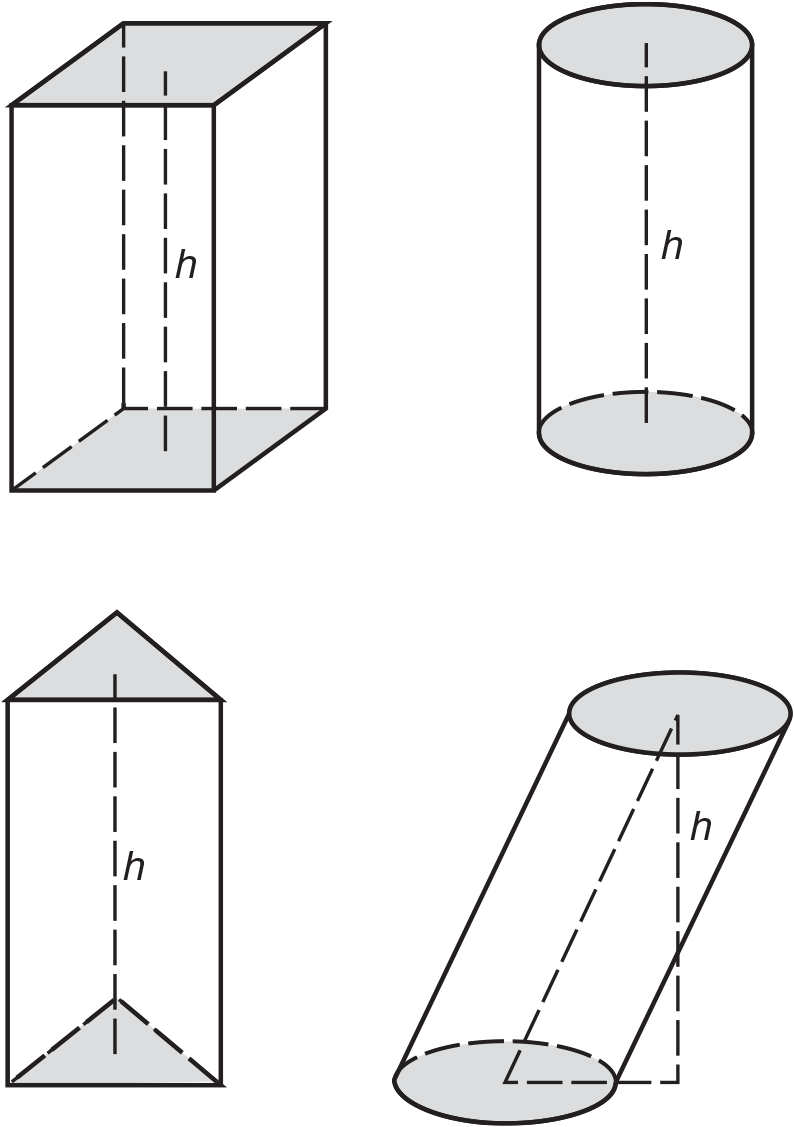
Rectangular solids and cylinders are special cases of geometric solids called prisms. A prism is a three-dimensional figure that has two congruent parallel bases. The (perpendicular) distance between the two bases is called the height. Four prisms are depicted in the figures below.

On the Math 1 test, all of the prisms are right prisms, which means that any line segment joining corresponding points on the bases is perpendicular to the bases. In the figures above, the first three prisms are right prisms; the fourth one is not. The volume formulas given in KEY FACTS K1 and K4 are special cases of the following formula.
Key Fact K5
The formula for the volume of any right prism is V = Bh, where B is the area of one of the bases and h is the height.